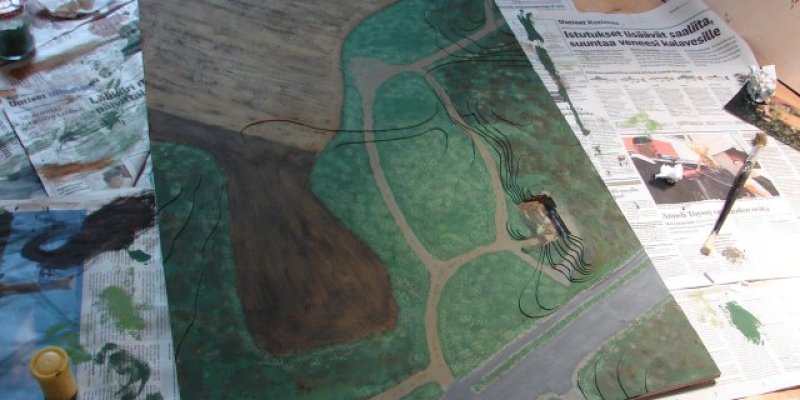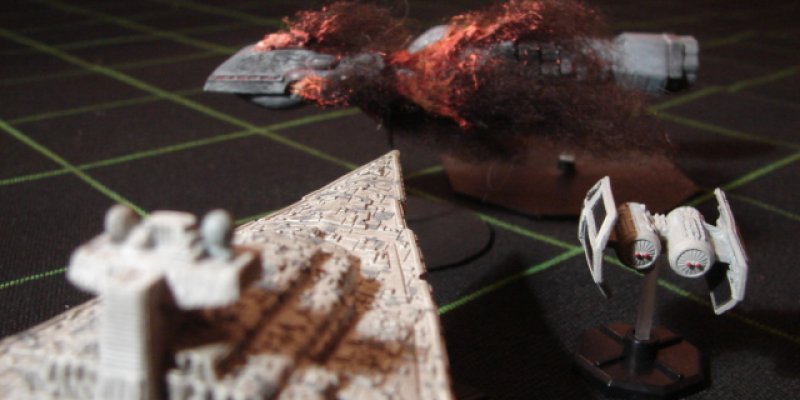Hello again, great to have contact back to Earth again! Epsilon Command is back online, and is here to give you update on the game status.
Shortly in Finnish: Tämä on pienoismalli lapsuuden kotitilastani Asikkalassa. Materiaalina on käytetty pääasiassa pahvia ja pienoismalli on upotettu lasikantisen sohvapöydän(link is external) sisään. Jouduin tekemään pöytään ylimääräisen välipohjan valkopintaisesta vaneerista, muuten tämä malli oli sopivin pienoismallia varten.
In my earlier post, I promised to introduce these steampunk terrain items to you, so here we go.
Here's a diorama I made for a competiton earlier, with some customized steampunk miniatures & scratchbuilt terrain. Miniatures used are Heroclix, star wars miniatures, ordered mainly from troll & toad. The miniatures in the photo are Heroclix Vandal Savage, Jekyll, moderately modified Mending priestess (this one's Mage Knight), and Batman's old buddies Riddler and Penguin. On the background, you'll see repainted Star Wars miniatures neimoidian soldiers (who have a bit strange face but hey I'm not that precise). I'll post another post later about the terrain pieces and how they have been made. Below you'll see the original photo.
Here's a few pics from the model of my home farm in Asikkala where I grew up, to be a gift for my father. Above, you can see all but one of the buildings in the model. The models I've created before and given as a gift, now I'll create the terrain around and build it inside a glass -covered table.
Last saturday was midsummer, and in Finland was burning bonfires. So, what's a better topic to write about than about modelling fire? Fire is extremely strong element in models, and this article shows you different ways of using it in your gaming terrains, dioramas or wherever you want to use it. If you haven't read my [FIRE MODELLING TUTORIAL], go ahead and read if now or after reading this article.
A non-gaming post this time; As readers of this site are mostly gamers, I'll say a few words for this piece's gaming use too; it's not difficult to stretch one's brains to have an idea of using this decorational model as a giant fish the PC's must fight (or can summon!) The model can also be thought a miniature.
This article is about basic dungeon terrains; If you have any terrains for roleplaying purposes, they are much likely to be stone wall -terrains like these!
Shaper & Maker roleplaying game session logs contain lots of photos about custom miniatures & terrains, info about those, some times game rules and of course, story itself. This is about Savage Worlds campaign that started a few sessions ago.
"My character is ready. What? Oh, I need to get some flaws to pay off all the extra stuff I've already picked. But my character is perfect... Now, what flaws would have least effect on my character?"
In my fantasy roleplaying game sessions, I use mostly three kinds of terrain (gaming props used with miniatures, if you are not familiar with the term): As my main setting currently is Ptolus(link is external), which is an urban setting, I'm using City terrain (houses, marketplace items etc); the second type is tiled wall terrain (which can be used for built dungeons, interiors of buildings, cemetery walls, sometimes as exteriors of buildings too when I'm lazy or want to give better view of the area for my players) and, the last one cave terrains (which in addition to cave walls can act as hills, rocks, cliffs etc).
These hindrances and skill adaptations are meant for a game where pc vs. pc conflict is good, even desirable. Players should understand that they should play their characters with feel rather than optimal efficiency - and if they do should be rewarded with bennies. These flaws can get pc's in quite much trouble, so an additional benny use for creating small story twists works well with them.





